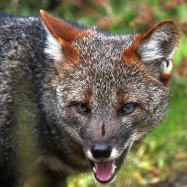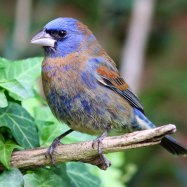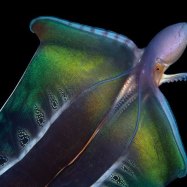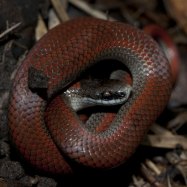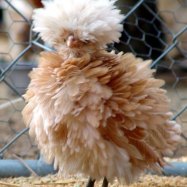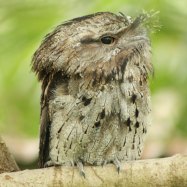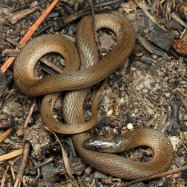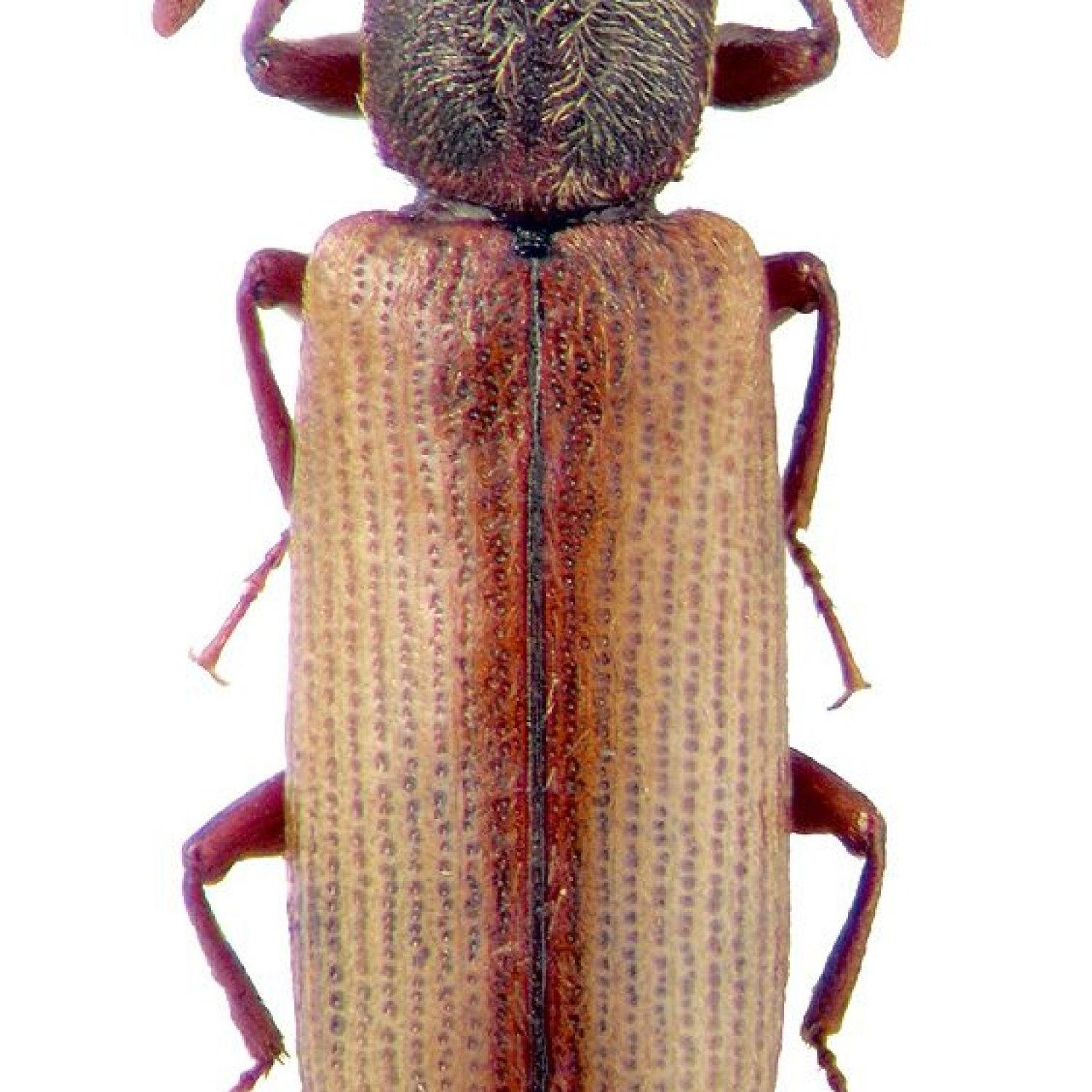
Powderpost Beetle
2-7 mm
The Powderpost Beetle may be small at only 2-7 mm in length, but it can cause significant damage to wood through its larval stage. Found in the family Bostrichidae, these cylindrical-shaped beetles can be found in various locations and can easily infest homes and furniture. Regular maintenance and proper treatment can help prevent these pests from wreaking havoc on your property. Stay vigilant and keep your home safe from these pesky critters.
Animal Details Summary:
Common Name: Powderpost Beetle
Kingdom: Animalia
Habitat: Woodlands, forests, and structures with wooden elements
The Mighty and Destructive Powderpost Beetle: A Tiny Insect with a Huge Impact
Buzzing through the cool, quiet breeze of the forest, the gentle chirping of birds is suddenly interrupted by the sound of a small but mighty creature – the Powderpost Beetle. While appearing delicate and harmless at first glance, this tiny insect is capable of causing massive destruction to wooden structures and furniture, earning it the name of "nature's wrecking ball".Scientifically known as Lyctus spp. and commonly referred to as Powderpost Beetles, these insects belong to the Kingdom Animalia and the Phylum Arthropoda, placing them in the same category as butterflies, spiders, and crabs Powderpost Beetle. However, the Powderpost Beetle is a unique and fascinating species, with its own set of distinguishing features and characteristics.
The Anatomy of a Powderpost Beetle
At a length of 2-7 mm, Powderpost Beetles may appear to be insignificant bugs, but their physical features make them stand out from other insects. Their cylindrical body shape, combined with their brown, reddish-brown, or black coloration, allows them to blend in perfectly with the wooden surfaces they inhabit, making them difficult to spot with the naked eye.Despite their small size, Powderpost Beetles possess strong mandibles that are designed to bore through wood, allowing them to feed on the cellulose present in the wooden fibers. These mandibles, which are located at the front of their head, work tirelessly to break down the wooden material, creating tunnels and chambers that serve as their home and food source.
The Life Cycle of a Powderpost Beetle
The life of a Powderpost Beetle begins as a tiny, white larva, emerging from its eggs laid under the surface of wooden structures. As they grow and develop, these larvae feed on the wooden fibers, eventually maturing into adult bugs.The adult beetles then begin the process of reproduction, laying eggs in gaps, cracks, or pores of the wood, starting the life cycle once again. With a lifespan of 1-5 years, these tiny insects can cause substantial damage to structures, posing a threat to wooden furniture, flooring, and even the structural integrity of buildings Plesiosaur.
Geographical Distribution and Habitat
The Powderpost Beetle is a global species, found in various parts of the world, including North and South America, Europe, and Asia. Their widespread distribution can be attributed to their ability to adapt to different climates, making them a common sight in both tropical and temperate regions.Their preferred habitat includes woodlands and forests, where they can find an abundant supply of wooden materials to feed on. However, they are also found in man-made structures, such as homes, barns, warehouses, and even historic buildings, making them a significant threat to the preservation of wooden structures and artifacts.
The Destructive Feeding Method of Powderpost Beetles
The Powderpost Beetle is primarily known for its destructive feeding method, which can cause severe damage to wooden structures and furniture. As mentioned earlier, their strong mandibles enable them to bore through wood, creating tunnels and chambers that weaken the structural integrity of the material.This feeding method not only poses a threat to the physical appearance of wooden structures but also to the safety and functionality of the affected areas. If left untreated, the damage caused by these beetles can result in costly repairs and replacements.
Prevention and Control Measures
The old saying "prevention is better than cure" holds true when it comes to dealing with a Powderpost Beetle infestation. Taking proactive measures to protect wooden structures from these pests is crucial in avoiding potential damage and expenses.One of the most effective prevention methods is to ensure proper ventilation and moisture control in wooden structures. These insects thrive in moist and humid environments, making it essential to keep areas dry and well-ventilated. Additionally, using treated or seasoned wood can also act as a deterrent for Powderpost Beetles.
In the case of an existing infestation, it is crucial to consult a professional pest control service to handle the situation. Treatment typically involves the use of insecticides that target the larvae and adult beetles, eliminating the threat and preventing future infestations.
The Impact of Powderpost Beetles on the Environment
Although Powderpost Beetles are considered a nuisance and a threat to wooden structures, they also play a vital role in nature's ecosystem. As wood-boring insects, they aid in the decomposition process of dead trees, allowing nutrients to be recycled back into the environment.However, their destructive nature makes them a potential threat to forest and plant health, especially in areas where trees are harvested for commercial use. In such cases, proper forestry management practices and pest control measures can help minimize the impact of Powderpost Beetles on the environment.
In Conclusion
The Powderpost Beetle, though small in size, is a remarkable insect with a reputation for causing significant damage to wooden structures and furniture. From their unique anatomy and feeding method to their global distribution and impact on the environment, these beetles are a fascinating species that deserves our attention and proper management.Whether it's preventing an infestation or addressing an existing one, it is crucial to take necessary measures to protect wooden structures from the destructive capabilities of Powderpost Beetles. With the right precautions and treatments, we can ensure that these tiny yet powerful creatures do not leave a trail of destruction in their wake.

Powderpost Beetle
Animal Details Powderpost Beetle - Scientific Name: Lyctus spp.
- Category: Animals P
- Scientific Name: Lyctus spp.
- Common Name: Powderpost Beetle
- Kingdom: Animalia
- Phylum: Arthropoda
- Class: Insecta
- Order: Coleoptera
- Family: Bostrichidae
- Habitat: Woodlands, forests, and structures with wooden elements
- Feeding Method: Wood-boring
- Geographical Distribution: Worldwide
- Country of Origin: N/A
- Location: N/A
- Animal Coloration: Brown, reddish-brown, black
- Body Shape: Cylindrical
- Length: 2-7 mm
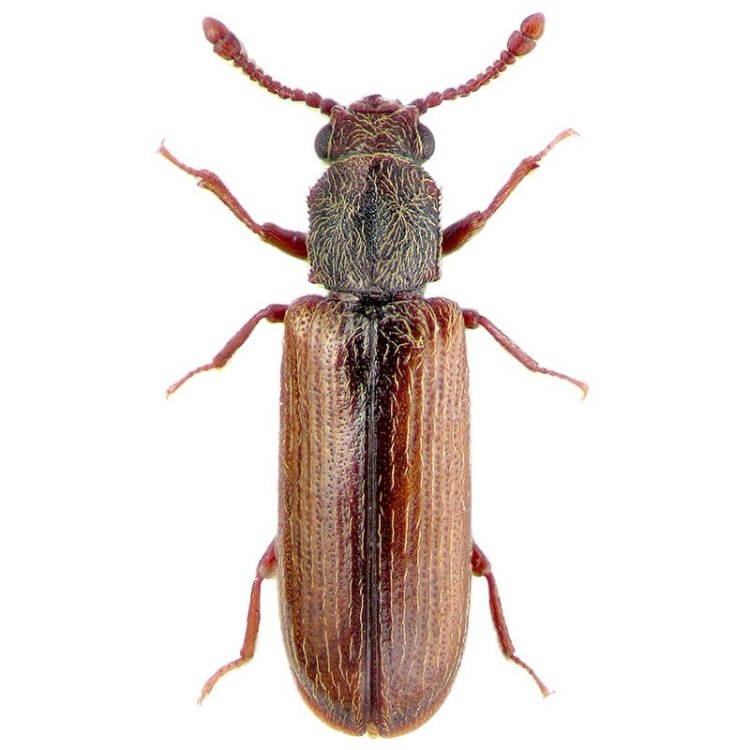
Powderpost Beetle
- Adult Size: Small
- Average Lifespan: 1-5 years
- Reproduction: Sexual
- Reproductive Behavior: Mating
- Sound or Call: None
- Migration Pattern: Non-migratory
- Social Groups: Solitary
- Behavior: Nocturnal
- Threats: Damage to wooden structures
- Conservation Status: Not evaluated
- Impact on Ecosystem: Help in the decomposition of dead wood
- Human Use: Pest control
- Distinctive Features: Long, slender body with segmented antennae
- Interesting Facts: • Powderpost beetles are named after the fine, powdery dust they produce when boring into wood. • They are pests that infest and damage wooden structures. • The larvae of powderpost beetles are the most destructive stage and can cause significant damage to wooden furniture and buildings. • The beetles prefer to infest hardwoods such as oak, ash, and walnut. • There are several species of powderpost beetles, including the Lyctus spp., which are commonly found in North America.
- Predator: Birds, other insects
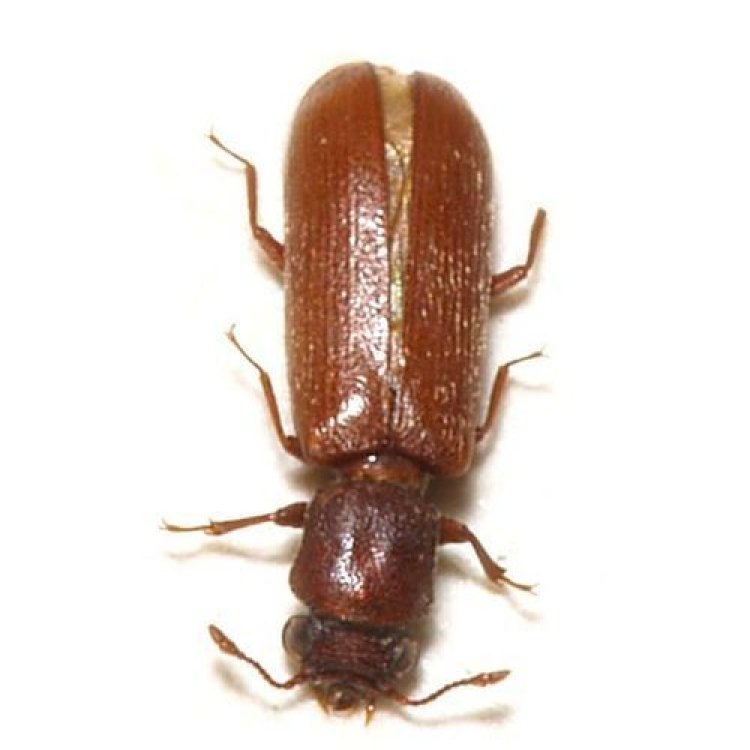
Lyctus spp.
The Amazing World of Powderpost Beetles
When we think of beetles, we often imagine large, colorful insects with hard and shiny exteriors. But there is one group of beetles that may not fit this typical image – the Powderpost Beetles. These tiny creatures, with an adult size of small, have a fascinating and unique life cycle. They may not be as flashy as their larger beetle relatives, but their impact on the ecosystem and human use makes them an interesting and important insect to learn about PeaceOfAnimals.Com.Powderpost beetles are named after the fine, powdery dust they produce when they bore into wood. They belong to the family Bostrichidae, which includes over 700 species worldwide. Although they are found in various parts of the world, they are most commonly found in North America. These beetles may be small, but they have distinct characteristics that set them apart from other insects.
Distinctive Features
One of the most distinctive features of powderpost beetles is their long, slender bodies and segmented antennae. These slender antennae are used to detect potential mates and food sources. The body of a powderpost beetle is usually dark brown and has small hairs covering it. They also have six legs, like most insects, which they use to crawl and cling onto surfaces.Lifespan and Reproduction
The average lifespan of a powderpost beetle is relatively short, lasting only between 1 to 5 years Paddlefish. However, this time is enough for them to cause significant damage to wooden structures.Reproduction for powderpost beetles is sexual, with males and females mating to produce offspring. The reproductive behavior of these beetles is quite fascinating. Males attract females by emitting pheromones, which are chemical substances used for communication within a species. Once a female has been successfully attracted, she will lay her eggs in cracks and crevices of wood. A female can lay up to 50 eggs at a time, and the total number of eggs laid in her lifetime can reach up to 300. The eggs usually hatch within 3 to 4 weeks, and the larvae start their destructive journey.
Morphology and Behavior
The larvae of powderpost beetles are the most destructive stage of their life cycle. They have a cylindrical body with a cream-colored head and a white body. The larvae are small but can grow up to 6 mm in length. They have strong chewing mouthparts that are used to tunnel through wood. These larvae prefer hardwoods such as oak, ash, and walnut, but they will also infest softwoods if there are no other options available.Powderpost beetles are usually solitary insects and live alone throughout their lives. They are also nocturnal, meaning they are most active at night. This is why they are not often spotted unless there is a significant infestation. The beetles do not make any sound or call, making it even harder to detect an infestation. They also do not migrate and stay in the same area where they were born.
Predator and Threats
As with any other insect, powderpost beetles have their fair share of predators. These include birds and other insects such as ladybugs and parasitic wasps. However, the biggest threat to powderpost beetles is their impact on wooden structures. Their larvae can cause significant damage to wooden objects, including furniture, flooring, and buildings.Human Use and Impact on the Ecosystem
While powderpost beetles are considered pests for humans, they do play an essential role in the ecosystem. The beetles help in the decomposition of dead wood, which is crucial for nutrient cycling and soil formation. Without these beetles, dead wood would take much longer to break down, and the ecosystem's overall health could suffer.Powderpost beetles have also been used in pest control. In the past, they were intentionally introduced to wooden structures to control and prevent future infestations. This approach, known as "biological control," is a natural and environmentally friendly way of managing pest populations. However, this method has been deemed ineffective and is no longer commonly used.
Conservation Status
Although powderpost beetles play a vital role in the ecosystem, they are not currently evaluated for conservation status. This is most likely due to the fact that their populations are not threatened or endangered. However, it is essential to be mindful of the potential impact of human activities on these insects and their habitats.Interesting Facts
• Powderpost beetles are not named after the dusty powder they produce, but rather the word "powder" is taken from the French word "poudre," meaning "dust."• While powderpost beetles can infest almost any type of wood, they have a particular preference for oak, ash, and walnut.
• There are several species of powderpost beetles, with the Lyctus spp. being the most commonly found species in North America.
• The larvae of powderpost beetles can take up to one to three years to develop into adults, depending on environmental conditions.
In conclusion, while powderpost beetles may not be the most well-known insect, they are a unique and important part of our ecosystem. They may cause damage to wooden structures, but their role in decomposition cannot be ignored. These small yet fascinating creatures continue to intrigue and surprise us with their distinctive features and behavior. So the next time you spot a powdery substance in your wooden furniture, you'll know who to blame – the tiny but mighty powderpost beetle.

The Mighty and Destructive Powderpost Beetle: A Tiny Insect with a Huge Impact
Disclaimer: The content provided is for informational purposes only. We cannot guarantee the accuracy of the information on this page 100%. All information provided here may change without prior notice.


